Reeves’s Pheasant: A Striking Bird of Central and Eastern China with Impressive Plumage and Size
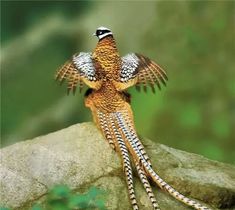
Reeves’s Pheasants are majestic birds that captivate with their distinctive appearance and impressive size. Native to parts of central and eastern China, these pheasants have also been introduced to certain regions of Europe, including France, the Czech Republic, and, to a lesser extent, the UK. In this article, we will explore the characteristics, habitat, behavior, and conservation status of the Reeves’s Pheasant.
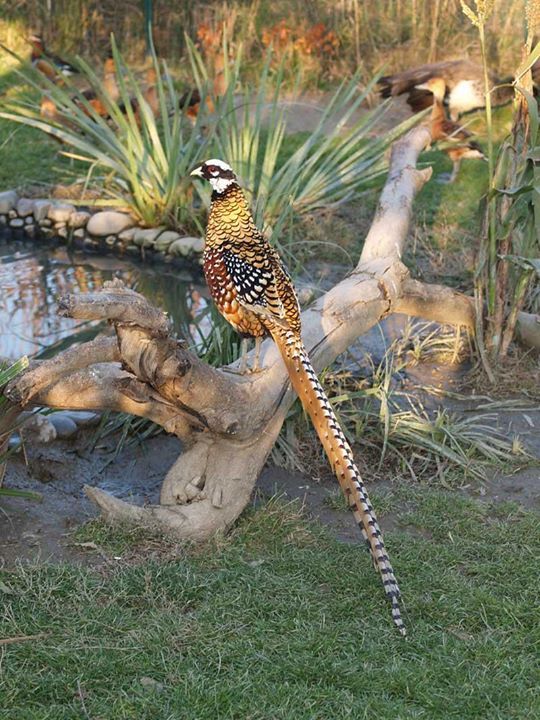
One of the most remarkable features of the male Reeves’s Pheasant is its appearance. With a white head and a black mask that extends to the back of the neck, these birds are instantly recognizable. Their vibrant golden-chestnut body is complemented by contrasting black scaling on the back, while the breast can be either black or chestnut. However, it is their tails that truly stand out, as they boast a buff-orange color with a distinctive black and white patternation. In fact, the tail of the Reeves’s Pheasant is the longest among all pheasants, with older birds occasionally reaching extraordinary lengths of over 200cm (82 inches).
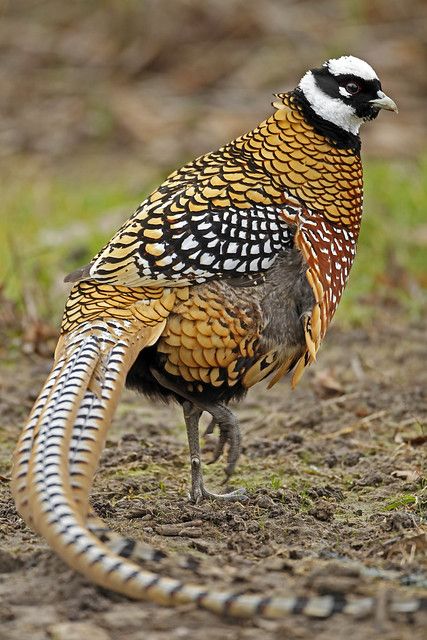
Females, although less striking in appearance, have their own unique features. They possess a black pattern on their heads, along with buff-brown faces and dark masks. The body of a female Reeves’s Pheasant displays a mixture of brown, chestnut, and buff colors with barring. Their tails are considerably shorter compared to males.
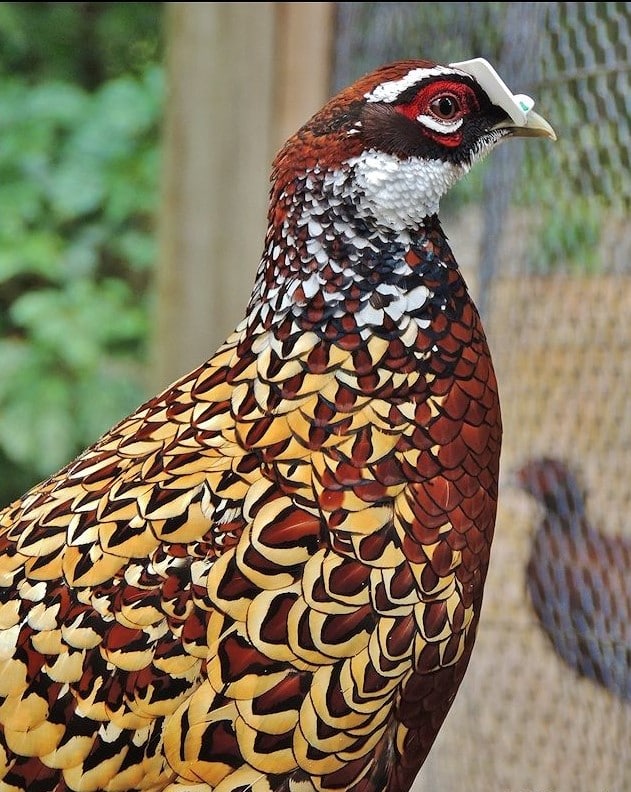
Reeves’s Pheasants are large birds, with males being considerably bigger than females. Male birds measure an average of 210cm (82 inches) in length, while females reach around 150cm (59 inches). The wingspan ranges from 55 to 90cm (21 to 35 inches), with males generally having a larger wingspan than females. Male birds weigh approximately 1500g (53 ounces), while females weigh around 950g (34 ounces).
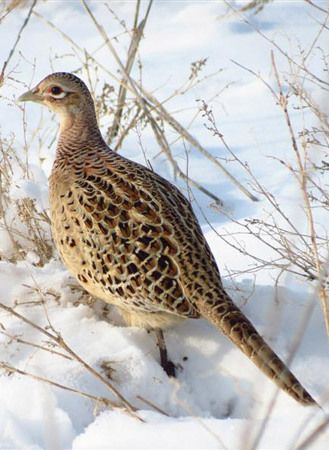
These birds were named after the British naturalist John Reeves, who introduced live specimens to Europe in 1831. Reeves’s Pheasants belong to the genus Syrmaticus, which includes other long-tailed pheasants such as the Copper pheasant, Mikado pheasant, Elliot’s pheasant, and Mrs. Hume’s pheasant.
Reeves’s Pheasants can exhibit aggression, particularly during the breeding season when males may display territorial behavior towards other males. Hormones and pheromones play a role in triggering this aggression, which is aimed at protecting their territory and partners.
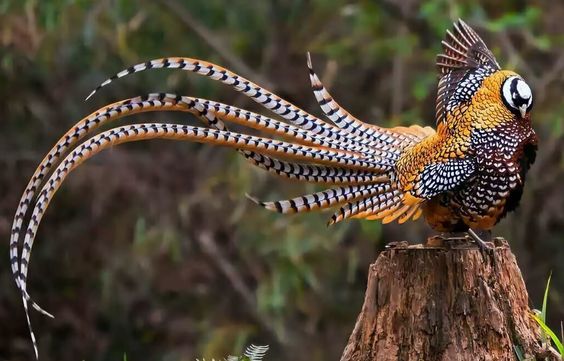
In terms of lifespan, Reeves’s Pheasants have an average lifespan of around 9 years. Unfortunately, they are currently listed as Vulnerable and face the risk of endangerment. In China, their population is estimated to range between 2,500 and 10,000 mature individuals, which is experiencing a steady decline due to habitat loss, poaching, and poisoning. Introduced populations in Europe, although relatively established in some areas, are also declining.
Reeves’s Pheasants have a varied diet consisting of seeds, fruit, insects, snails, worms, buds, and fresh shoots. They forage on the ground, using scratching and digging to find their food. During winter, they often feed in small groups, mainly composed of females and juveniles.
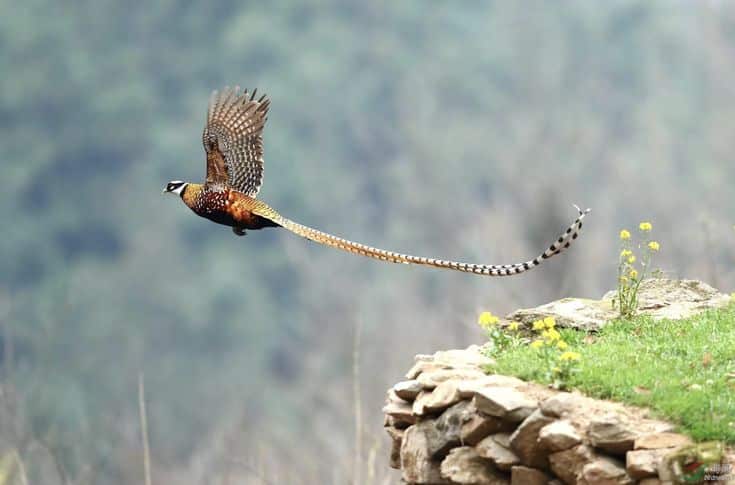
While little is known about their mating behavior, it is believed that male Reeves’s Pheasants are polygynous, often seen with multiple female partners. Nests are built by the female on the ground in grass or shrubs, where a clutch of 6 to 9 cream or
olive-colored eggs is laid. Females incubate the eggs and care for the chicks, while males defend the territory.
In their natural habitat, Reeves’s Pheasants can be found in evergreen woodlands, grassy areas with bushes, and even on steep slopes, typically at elevations ranging from 200 to 2600 meters. Introduced populations in Europe can be found in lowland forests and sometimes on farmland.
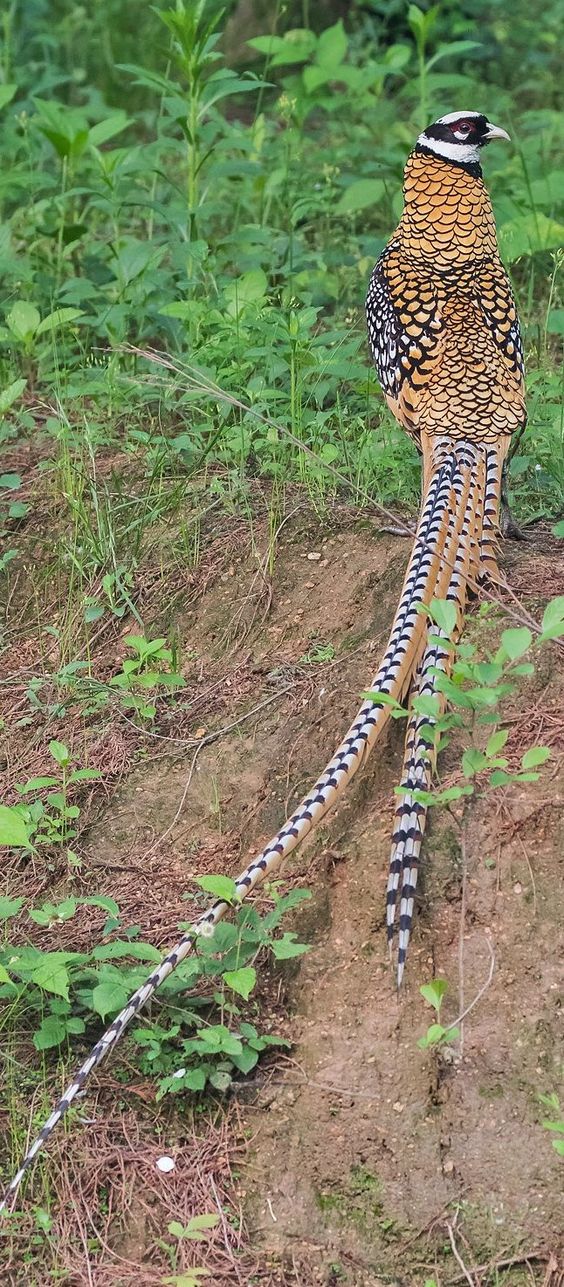
Although Reeves’s Pheasants are capable of flight, they are primarily sedentary and do not migrate. They prefer running to flying, as their explosive flight consumes significant energy and limits their flight distance to a few kilometers.
In conclusion, Reeves’s Pheasants are striking birds known for their distinctive appearance, including a white head, black mask, and vibrant plumage. They are native to parts of China but have also been introduced to select European countries. With their impressive size and remarkable tails, these pheasants capture the attention of bird enthusiasts. However, they face challenges as their populations decline due to various factors. Efforts to protect and conserve these magnificent birds are crucial to ensuring their survival in the wild.



